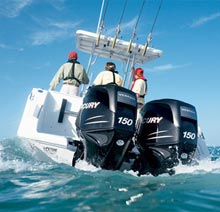Looking Back at the EPA Phase-In
 Today’s boaters could be forgiven for putting the past out of mind. As recently as the 1990s, federal rules for outboard engine efficiency were much less stringent – to the point that pollution became a problem and the small boating industry became something of a scapegoat for environmental groups. Around 1996, the marine industry and the Environmental Protection Agency teamed up to create and enforce fuel standards.
Today’s boaters could be forgiven for putting the past out of mind. As recently as the 1990s, federal rules for outboard engine efficiency were much less stringent – to the point that pollution became a problem and the small boating industry became something of a scapegoat for environmental groups. Around 1996, the marine industry and the Environmental Protection Agency teamed up to create and enforce fuel standards.
That standard might seemed especially ambitious at the time – outboard engine hydrocarbon emissions were to be reduced by 75 percent from 1996 levels in just 10 years – but it was necessary to move forward. The phase-in started in 1998, and traditional carbureted 2-stroke engines were immediately targeted for a revamp. In the past, 2-strokes accounted for more than 12 times as much pollution as their 4-stroke counterparts.
Today, most of us would be hard-pressed to remember the days when 2-strokes lagged behind in terms of fuel efficiency and eco-friendliness. Direct fuel injection represented a tremendous boon by cutting down the ozone-forming exhaust coughed up by engines as much as 95 percent. The increased fuel efficiency of today’s outboards has allowed boaters to save serious cash on bulk oil. It’s important to note, however, that these regulations apply only to newer boats. The clean technology developed by manufacturers with the help of the EPA cannot be retrofitted to an old boat.

